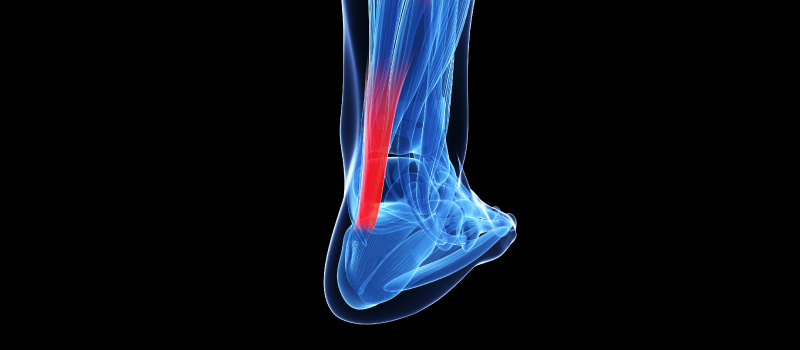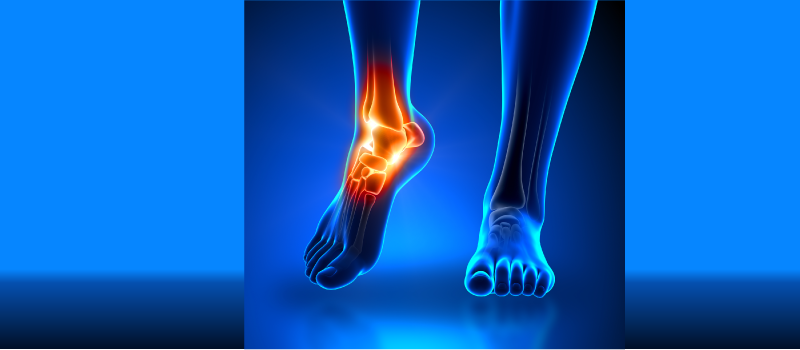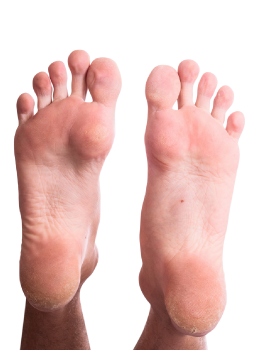Connect With Us
Blog
Items filtered by date: April 2020
Ways To Stay Active After Huring Your Achilles

Ways To Stay Active After Tearing Your AchillesIt can be very painful and stressful to tear an achilles tendon. This can happen to people who are very active, who do sports or dance, and so it can be a challenge to stay active after this kind of injury occurs. For people who are struggling through the recovery process and still want to be able to exercise, we have gathered some activities with a torn achilles or achilles tendonitis that you can turn to.
Use Dumbbells
There is no reason you should not keep your upper body in shape as you recover from a tendon tear. You can do this sitting up in bed or in a chair, with dumbbells of any weight you are comfortable lifting. It is important to listen to your body, however, especially if you are taking pain medication, which can impact the way you exercise even your upper body. Dumbbell presses are a great way to work tough muscles in the arms so that you can even improve the way you look while still in the recovery process.
Swimming
If you are about six weeks into the recovery process, anther of the best activities to consider is swimming. This is not an option until six weeks have passed, but since being able to strenuously exercise will still be a few months away, you want to consider swimming.
Physical Therapy
After an injury of this kind, you will need to go do physical therapy to get your tendon working the way it should. This can be a great way to stay active without risking the recovery process. Ask the physical therapist to show you safe exercises to do yourself in order to maintain flexibility and strength as you recover. Of all the activities with a torn achilles that you can do, this is the safest and most effective.
Core Training
Core training can be done in a seated position and will not only keep you active as you recover, but it will strengthen your entire body so that when you heal you will be stronger than before. Things like simple waist rotations can be very beneficial to you and your core. You can also try bending to the sides to try and touch the floor, or Russian twists, which can be very effective in building abs and strengthening your core. Be sure to sit in a chair that is stable and will not move about while you exercise, and that you are not putting weight on your injured foot.
These are some of the best ways you can stay active even as you recover from a tendon injury. It can be a stressful and long process, but by doing these exercises you will be keeping yourself busy and ensuring that can get back to exercising once you recover. Be sure to listen carefully to your doctor and physical therapist to stay safe at all times and to take the medications that they provide. You will be able to get back to your regular exercises soon.
What is the Difference between an Ankle Sprain and a High Ankle Sprain?

Ankle sprain is actually a common injury and is usually encountered by millions of people all over the United States. Nevertheless, what exactly is the difference between an ankle sprain and a high ankle sprain? A high ankle sprain is also usually experienced over a long period of time. The very reason is the anatomy of the ankle including the ligaments injured in an ankle sprain than a high ankle sprain.
An ankle is usually consisted of three bones found in the lower part of the leg: the fibula, the talus and the tibia. These usually work together in order to form the so-called ankle joint that sustains the loads and the body weight of a person. These soft tissues will surround the ankle and will permit it for its motion and stability. The ligaments also responsibly stabilize the ankle.
To further understand the difference between the two, read on below:
Ankle Sprain
An ankle sprain usually involves injury to the ligament which is usually found outside of the ankle. This is known as the ATFL or the anterior talofibular ligament. This is found between the endmost sections of the fibula down to the talus on the exterior part of the ankle. This acts as a stabilizer in the ankle and this is usually injured when one “rolls” the ankle.
Athletes who suffer from an ankle sprain will have swelling, bruising and pain in severe sprains. These are the symptoms that can be most experience on the outer area of the foot right below the ankle joint. There are times that there will be maximum tenderness felt in the single area. Even with the onset of these symptoms, other athletes still return to their sport activities at higher level. They just depend on ankle braces that really support the ankle and help prevent it from compensating due to the injured ligament and from “re-rolling”.
High Ankle Sprain
A high ankle sprain is usually felt when a set of ligaments are injured. This set of ligaments is known as the “syndesmosis” found on top of the ankle joint. This is also situated between the fibula and tibia and this holds the bones together.
In usual walking, the fibula and tibia are exposed to higher forces and spread the fibula and tibia apart. In this regard, the syndesmosis will act as an absorber between the fibular and tibia. Thus, this will help prevent the bones when it comes to splaying.
With periods of walking, that so-called syndesmosis will be exposed to higher forces. With cutting and running, higher forces will also be experienced. If ever it is sprained, each step will really prove to be painful.
The high ankle sprain does not cause bruising or swelling locally. This does not even look bad that makes it difficult for other people to understand its severity. Rehabilitation and rest are simply necessary in complete healing especially when one experiences high ankle sprain injury. There is not yet any bracing that can help prevent or treat the high ankle sprain.
What Are the Treatments for Corns and Calluses?

Even though calluses and corns do not really pose serious problems, they are still considered to be the most common foot conditions. They are known to build up as a form of response to the abnormal friction or pressure on the foot. It was actually estimated that eighty-seven percent o American adults have these foot problems.
As corns and calluses are known as patches of toughened skin, they continue to develop and protect the foot tissue against any repeated pressure and friction. In this article, you will learn more about the treatment options and home remedies that help alleviate the pain of calluses and corns. There are also suggestions for you to be able to prevent them.
Here are the following home remedies for you to consider:
Apple Cider Vinegar and Castor Oil
Just fill a basin with soapy and hot water and then add up an apple cider vinegar. You may now soak your feet in it and leave it for about fifteen minutes. You may also dab a castor oil for corns right after soaking your feet.
Vitamin A or E
Before bedtime, make use of a need in pricking a vitamin A or E capsule. Rub the oil right through your corn. After you have let it sit for a few minutes, you can put on your white cotton sock. Repeat this process until you have found out that the corn is already gone.
Lemon
Before you go to sleep, you need to cut a slice of lemon. Place its pith over your foot, specifically your corn. Secure with a form of bandage and cover it up with a cotton sock. Leave it overnight and continue until it has disappeared completely.
Onion
Just pour white vinegar on a glass container over a white onion. Leave it in a warmer and better place throughout the day. Cover the corn with the onion and then go to your bed. You may make use of a bandage tape or bandage for you to hold in its place. Continue repeating the treatment at night.
Aspirin
Crush 5 or 6 aspirin tablets and mix those equal parts with water and apple cider vinegar. Once you have already added enough in forming a paste, the next thing for you to do is to keep on rubbing it onto your callus or corn. Just the same, make use of a bandage for you to keep it in place.
Epsom Salts
Put Epsom salts right through the basin filled with warm water. Soak your feet and leave them for about ten minutes. Once the dead skin on your feet has softened, you may make use of a pumice stone or a callus file. Rub it off on the top layers of the skin. You need to be more patient in regard with this matter.
With the mentioned home remedies, it is still best to consult Corn Treatment Long Beach medical clinic that specializes in foot and ankle treatments. You need to get the recommendation from a specialist. This is necessary especially if the symptoms of your feet do not get better!

